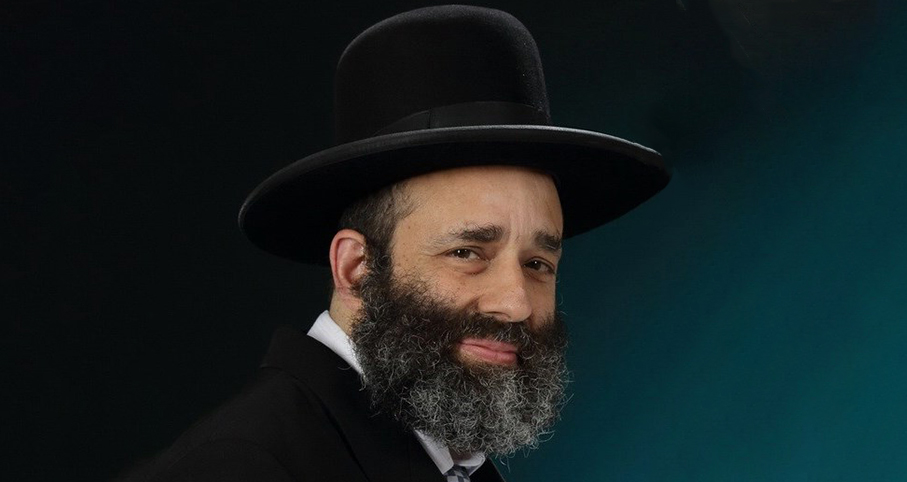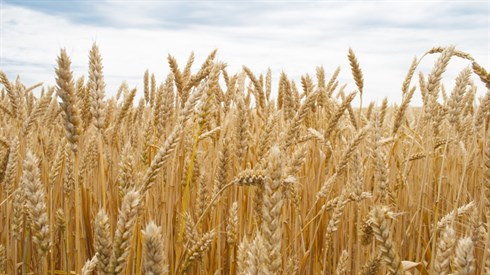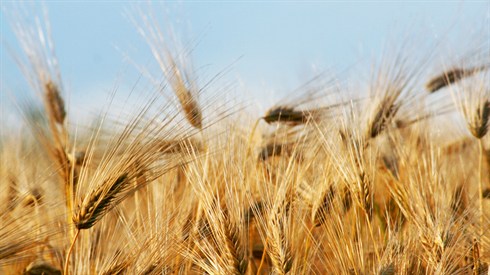- Jewish Laws and Thoughts
- The laws of Torah study
663
May I make a siyum on a Friday?
Question #2: Biblical Finish
May I use a siyum on a book of Tanach to avoid fasting on erev Pesach?
Question #3: No One Finished
A chaburah of which I am a member is completing a mesechta in the Nine Days. Everyone of us has missed the shiur at times, so none of us has actually completed the entire mesechta. Can we eat meat when we celebrate this siyum together?
Introduction:
At the end of this week’s double parshiyos of Behar and Bechokosai, we celebrate the siyum of the completion of another chumash of the Torah. Since, unfortunately, most of us have been unable to hear the reading of the Torah, I though it would be a good time to reflect on the halachic background of making a siyum.
Several Talmudic and Midrashic passages serve as sources for the simcha and celebration appropriate for completing an important learning project or other mitzvah activity. As always, our goal is not to issue halachic rulings for any individual; that is the role of each individual’s rav or posek. Our purpose is to provide educational, halachic background on the topic at hand.
The most obvious Talmudic passage about the concept of siyum on studying Gemara is a quotation in which Abayei stated, I will be rewarded because whenever I heard that one of our young Torah scholars completed a mesechta, I made a seudah for all the other scholars (Shabbos 118b). As Rashi explains, Abayei was the rosh yeshiva and made a siyum for his yeshiva when one of his talmidim completed a mesechta.
Shehasimcha bi’me’ono
The Maharshal considers a siyum mesechta such a great celebration that he writes that the introduction of the bensching after the seudah in its honor should warrant the addition of the words shehasimcha bi’me’ono, "that this celebration is in His Presence." We usually recite this passage only at a wedding or at a sheva brachos. The Maharshal, however, felt that a siyum and a pidyon haben also warrant this recital. His reasoning is straightforward:
The Gemara (Kesubos 8a) cites a dispute whether shehasimcha bi’me’ono is recited at a bris, concluding that it is not recited for an interesting reason. Since, at a bris, the child suffers some pain, we should not imply that it is a moment of simcha for everyone in attendance. The Maharshal reasons that a siyum is a greater celebration than a bris, because all the participants are be’simcha. A similar line of reasoning may be applied to a pidyon haben. As a result, we should recite shehasimcha bi’me’ono when bensching after either of these smachos.
We actually find this issue discussed earlier than the Maharshal, who lived in sixteenth- century Poland. The Abudraham, who lived in Spain during the thirteenth century, cites an opinion that one should recite shehasimcha bi’me’ono at a pidyon haben, but he rejects this for the following reason: Sometimes, there could be a very tragic situation in which the pidyon haben is performed after the infant has died, in which case there would not be a simcha, but additional grief for the parents, and, as a result, no recital of shehasimcha bi’me’ono. (Explaining this halachic scenario requires a lengthy discussion of the laws of pidyon haben, which is not the topic of this article.) Since this situation can happen, it was decided never to recite shehasimcha bi’me’ono at a pidyon haben.
The Abudraham does not discuss whether we should recite shehasimcha bi’me’ono at the bensching of a siyum. Standard practice is not to recite shehasimcha bi’me’ono after either a siyum or a pidyon haben. The likely reason for this practice is that there is a difference between a seudas mitzvah that is also a simchas mitzvah, such as those celebrating a wedding, a bris or a sheva brachos, and a seudas mitzvah that does not qualify as a simchas mitzvah, such as a meal celebrating a bar mitzvah, siyum or pidyon haben. Although the meals served in celebration of a siyum and a pidyon haben are seudos mitzvah, and, according to some opinions, a seudas bar mitzvah is also, none of these qualify as a simchas mitzvah. The recital of shehasimcha bi’me’ono is appropriate for a simchas mitzvah, not a seudas mitzvah.
There are other differences affected by whether an event qualifies as a seudas mitzvah or also as a simchas mitzvah. For example, an aveil may not attend a simchas mitzvah, and therefore he is precluded from attending a wedding or sheva brachos. However, he is permitted to attend a seudas mitzvah, and, for this reason, he may attend a siyum, and, according to most authorities, a pidyon haben.
Another source for a siyum
Returning to our theme of a siyum for completing a learning project, here is a second source for the practice of celebrating the achievement of a mitzvah. When the construction of the Beis Hamikdash was completed, the celebration lasted for fourteen consecutive days. The Gemara notes that this celebration was so significant that Yom Kippur was not observed that year in Yerushalayim, since they were all celebrating the dedication of the Beis Hamikdash (Moed Katan 9a). How can a celebration be so important that they actually ate in its honor on Yom Kippur?
That this celebration superseded fasting on Yom Kippur was derived from a kal ve’chomer. When the mishkan was dedicated, for the first twelve days, private korbanos of each of the nesi’im were offered (Bamidbar Chapter 7), which means that some of these korbanos were offered on Shabbos. Yet, we know that korbanos of an individual never supersede Shabbos. The only possible conclusion to be reached is that dedicating the mishkan was so important that it superseded Shabbos.
Dedicating the Beis Hamikdash has greater significance than the dedication of the mishkan, since the Beis Hamikdash was a permanent structure. And since Shabbos, which is holier than Yom Kippur, was superseded by the celebration of the dedication of the mishkan, certainly proper celebration of the Beis Hamikdash supersedes Yom Kippur. Since observing the fast on Yom Kippur would take away from the immense simcha and celebration involved in inaugurating the Beis Hamikdash, the fast of Yom Kippur was set aside that year!
Obviously, celebrating the inauguration of the Beis Hamikdash is a much greater simcha than a siyum on a mesechta, or even the siyum hashas of all the daf yomi shiurim around the world. Nevertheless, this Gemara conveys the value of completing a mitzvah, which includes the completion of a learning project.
A third source
Yet another source for the festivity of a siyum is based on the following passage of Gemara (Taanis 31a). There the reason provided for the gala festival of the 15th of Av was because it was the annual date on which Klal Yisroel completed chopping the wood necessary for the Beis Hamikdash. Since this was the culmination of a long mitzvah, finishing it every year required a major celebration, similar to completing the Torah (Tosafos Yom Tov, Taanis 4:8).
We should note that this event was celebrated by the entire community, not only by those who actually participated in chopping, gathering and processing the wood. In the same spirit, the Maharshal writes that it is a mitzvah to participate in a siyum, even if you did not participate in the learning (Yam shel Shlomoh, Bava Kama 7:37; see also Pri Megadim, Mishbetzos Zahav 444:9).
This reminds me of an observation that I heard many times from my Rosh Yeshiva, Rav Yaakov Ruderman, that when one person completed Shas in a town in Eastern Europe, it was commonplace that the entire town wore their Shabbos clothes that day – to demonstrate their happiness that the town now boasted another Jew who had completed Shas!
Simchas Torah
The tremendous rejoicing of Simchas Torah is also an extension of this idea, since we are celebrating that we have completed a cycle of reading the Torah (Or Zarua and Hagahos Ashri, end of Sukkah). In earlier generations, this included inviting the entire community to a festive meal, sponsored by the chassan Torah, in which fine delicacies were served (ibid.).
For this reason, I know that some gedolim emphasize that hashkafah droshos on Simchas Torah should not discuss future commitments to learning – the goal on Simchas Torah is to celebrate what has been accomplished, and discussing future commitments detracts from the celebration!
On the other hand, this creates a question: At the time of the Gemara, there were different customs regarding how often the reading of the Torah was completed (Megillah 29b). Today, it is universally accepted that we complete the Torah reading every year; but at the time of the Gemara, there were communities that completed the Torah only every three years, or three-and-a-half years (twice in a shemittah cycle), as explained by the Maharshal (Kol chilukei dinim… #48, printed in Yam shel Shlomoh after mesechta Bava Kama).
Notwithstanding that those following this custom did not complete the Torah annually, the Gemara (Megillah 31a) teaches that the reading for Simchas Torah begins with Vezos Habracha, the last parsha of the Torah. For those communities that read the entire Torah every year, the reading of Vezos Habracha is very appropriate on Simchas Torah, because this is the day that the annual reading of the Torah is completed. But why did those who completed the Torah reading only every three years read Vezos Habracha on Simchas Torah -- they were only a third of the way through the cycle of reading the Torah?
This question is raised by the Meshech Chachmah (end of Vezos Habracha), who provides a fascinating answer to the question.
There are two different reasons why we read Vezos Haberacha on Simchas Torah:
(1) Because it completes our reading the Torah.
(2) Because the beginning of parshas Vezos Haberacha alludes to the fact that Klal Yisroel accepted the Torah from Hashem sight unseen, whereas the other nations rejected the Torah (Rashi at the beginning of Vezos Haberacha).
This symbolism is reflected in the offerings of the bulls as public korbanos in the Beis Hamikdash on Sukkos and Shemini Atzeres, the latter being the same Yom Tov as Simchas Torah. (In Eretz Yisroel, this one day Yom Tov is universally called Simchas Torah.) Cumulatively, through the seven days of Sukkos, we offer seventy bulls, one for each of the nations of the earth. On Simchas Torah, we offer only one bull, which represents the unique relationship that Klal Yisroel has with Hashem (Rashi at the end of parshas Pinchas). For this reason, Vezos Haberacha is an appropriate reading for Simchas Torah, even in places where they did not complete the reading of the Torah that day, since it commemorates the special relationship that exists between Hashem and the Jewish people, which we celebrate enthusiastically on Simchas Torah. (See also the Collected Writings of Rav Hirsch, Volume III, page 106, where he explains the celebration of Simchas Torah in a similar way.)
A fourth source
Returning to the gala festivities associated with a siyum, another Midrash is quoted as a source for this celebration. The posuk reports that when Hashem appeared to Shlomoh Hamelech in a dream and offered him his preference for a present, Shlomoh requested wisdom. Upon awaking he discovered that he had now been given colossal understanding. He then went to Yerushalayim, stood near the aron of Hashem, brought many korbanos to thank Hashem for his new knowledge and made a party for the entire nation to join in his celebration. The Midrash concludes that this teaches that we should make a seudah upon attainment of a Torah milestone (Shir Hashirim Rabbah 1:9).
Fridays
At this point, we can discuss our opening question: "May I make a siyum on a Friday?"
Allow me to explain the question: The Shulchan Aruch (Orach Chayim 249:2) prohibits having a fancier meal on Friday than is usual, because this takes away from the honor due Shabbos. The Rema contends that a bris or a pidyon haben that falls on a Friday is an exception to this rule and can be observed on Friday, which, he notes, is the accepted custom.
What about a siyum on a Friday
In a note that is all of four words long, the Biur Halacha (249:2 s.v. Oh) writes that, just as a bris or a pidyon haben may be celebrated on a Friday, so may a siyum. Presumably, he feels that the celebration of a siyum should not be delayed, even to complete the learning until Shabbos or Sunday, in order to celebrate it in a timely fashion.
However, other authorities disagree with the Biur Halacha’s conclusion, contending that the completion of the learning should, indeed, be delayed in order to avoid holding the siyum on Friday, noting that even regarding a pidyon haben, not all authorities agreed with the Rema’s conclusion to hold it on Friday (Ketzos Hashulchan 69:7 in Badei Hashulchan). (We should note that an early authority, the Maharam Mintz, ruled that you can delay the completion of a mesechta to an appropriate time that you wish to celebrate, and complete the mesechta at that time [cited by Shach, Yoreh Deah 246:27].)
Tanach or Mishnah?
At this point, we can discuss the second of our opening questions: "May I use a siyum on a book of Tanach to avoid fasting on erev Pesach?" In other words, completing what type of learning project qualifies as a siyum?
The halachic authorities discuss this question in the following contexts. Does attending such a siyum exempt a firstborn from fasting on erev Pesach? Does it permit people to eat meat or drink wine during the Nine Days? These questions are discussed by several halachic authorities, among whom I found the following rulings:
The Pnei Yehoshua (Brochos 17a) understands that when Rabbi Yochanan, the amora, completed studying the book of Iyov, he made a seudas siyum, similar to that made when completing a mesechta. This implies that completing a book of Tanach qualifies as a siyum, but it does not teach us to what depth it must be studied, since Rabbi Yochanan certainly studied Iyov in great depth.
Some rule that someone who has a proper seder studying a book of navi may celebrate a siyum on erev Pesach, even if it is a small sefer, and may use it as a basis to avoid fasting. However, if he was studying it primarily to be able to avoid the fast, he may rely on such a siyum only if he studied a large sefer of Tanach, but not a small one (Shu"t Ha’elef Lecha Shelomoh #386). Others rule that one can use a book of navi as a siyum for these purposes only if it was studied in depth (Shu"t Igros Moshe, Orach Chayim #157).
We should also note that the Elyah Rabbah (551:26) rules that you should not speed up or slow down your learning in order to use a siyum as a reason to eat meat during the Nine Days. The Elyah Rabbah also suggests that, if this individual does not usually make a siyum when he completes a mesechta, he may not make a siyum during the Nine Days for the purpose of allowing people to eat fleishig.
No one finished
At this point, we can discuss the third of our opening questions: "A chaburah of which I am a member is completing a mesechta in the Nine Days. Everyone of us has missed the shiur at times, so none of us has actually completed the entire mesechta. Can we eat meat when we celebrate this siyum together?"
Many authorities quote a passage of Gemara (Bava Basra 121b) and the commentary of Rashbam thereon to demonstrate that this is a valid siyum. There the Gemara explains that the immense celebration associated with the 15th of Av was because this was the date when the chopping and gathering of the wood used in the Beis Hamikdash was completed every year. These authorities note that it was not one individual, nor even one group that participated in this holy and extensive project, but it was a large, joint effort completed by the last group on that date. This approach allows us to answer the third of our opening questions: "A chaburah of which I am a member is completing a mesechta in the Nine Days. Everyone of us has missed the shiur at times, so none of us has actually completed the entire mesechta. Can we eat meat when we celebrate this siyum together?
Rav Reuven Margaliyos explains why this qualifies as a valid siyum, even though no individual finished the entire mesechta. He compares it to the following two halachic concepts. First, there is a halachic principle that when two people together perform a melacha that each could not do on his own, they are culpable as if each performed the melacha by himself. This halachic concept is called zeh eino yochol ve’zeh eino yochol. Rav Margaliyos notes that if this provides sufficient reason to make someone culpable, it certainly qualifies as a reason to benefit, because of the halachic principle of merubah midah tovah mimidas pur’anus, that a positive attribute is greater than something harsh
(see Yoma 76a et al).
A second proof rallied by Rav Margaliyos is the halacha that if two people own a bull together that kills someone, both owners are obligated to pay the kofer, the atonement money, as if they were the sole owner. Thus, we see that a financial obligation can be created by my being part of a group. If so, it is certainly true that I can celebrate something that was accomplished by a group (Nefesh Chayah, Orach Chayim 551:10, quoted in Daf al Daf).
Conclusion
From all the above, we see the beauty and celebration that is associated with completing a large mitzvah project, and particularly, the achievement of completing a siyum after studying something in appropriate depth. I wish everyone my brochos of cheilecha le’oraysa, always use your strengths and talents to study and observe the Torah!
This Shiur is published also at Rabbi Kaganof's site

The Halachot of Pidyon Haben
Rabbi Yirmiyohu Kaganoff | 5769

The Halachot of Pidyon Haben
Rabbi Yirmiyohu Kaganoff | 5769

Children in Diapers in Shul During Davening
Various Rabbis | 5774








